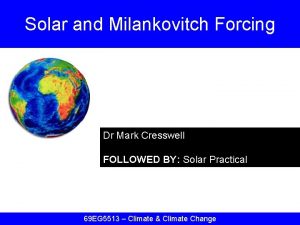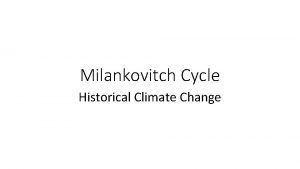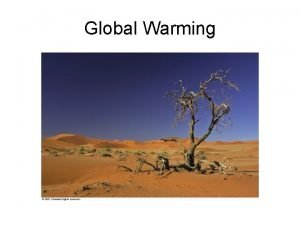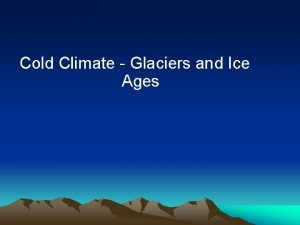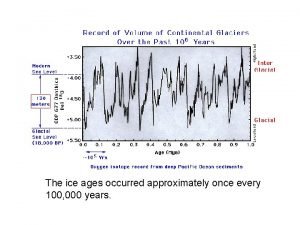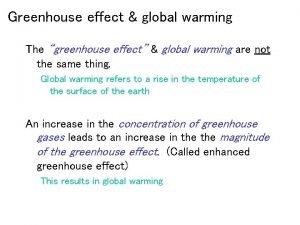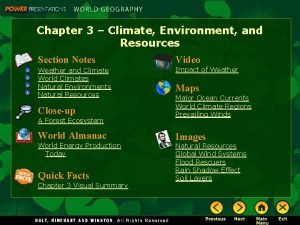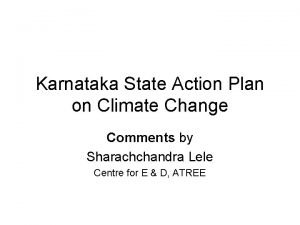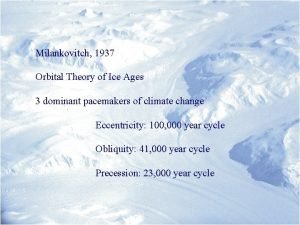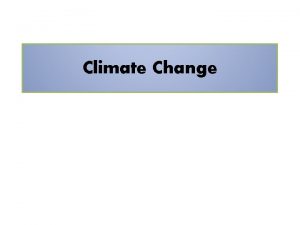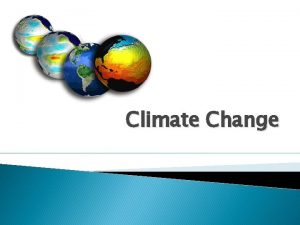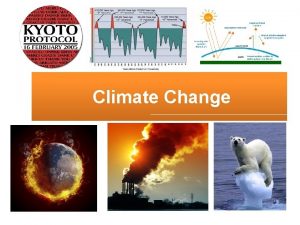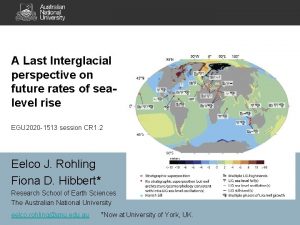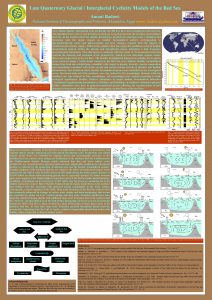Milankovitch Cycle Historical Climate Change During warm interglacial













- Slides: 13

Milankovitch Cycle Historical Climate Change

• During warm, interglacial periods denoted by the grey bars, the concentrations of greenhouse gases, CO 2 and CH 4, were higher than during the colder, glacial periods.


Earth’s Natural Climate Change • Interglacial periods occur about every 100, 000 years. • Why do these glacial and interglacial changes occur?

Earth Orbit

Eccentricity, Spherical • 100, 000 years • Max to Max

Obliquity, Axial Tilt Varies from about 22° to 25° Period of about 41, 000 years.

Precession, Wobble Precession period of about 20, 000 years.

Why do times of glaciation occur episodically on Earth?

Milankovich Cycle 3 things change within Earth’s motion • 1 - The Eccentricity of the Earth’s orbit varies just slightly from one maximum to the next every 100, 000 years. • Eccentricity is at its maximum = Earth is closest to the sun. • 2 - The angle of tilt, the obliquity, varies from about 22° to 25° with a period of about 41, 000 years. • 3 - Like a large wobbly spinning top, the Earth’s rotation axis precesses with a precession period of about 20, 000 years.

Orbital Forcing • About every 100, 000 years. • When all 3 variations occur at the same time warming begins. • The end of an ice age coincides with the times when the northern hemisphere 1. tilts toward sun at high obliquity 2. the orbital eccentricity is at a maximum 3. the Earth is closest to the sun during the northern hemisphere summer.

So what’s the big deal about climate change? What’s different now?

Group Activity • Draw a picture that shows the Earth in orbit and accounts for all aspects of the Milankovitch cycle. • Label the 3 parts and how they can vary. • Indicate on the drawing when an interglacial period is triggered.
 Climate change 2014 mitigation of climate change
Climate change 2014 mitigation of climate change Milankovitch cycles
Milankovitch cycles Milutin milankovitch
Milutin milankovitch Precession milankovitch cycles
Precession milankovitch cycles Global warming paragraph
Global warming paragraph Milankovitch cycles
Milankovitch cycles Milankovitch
Milankovitch Greenhouse effect paragraph
Greenhouse effect paragraph Warm climate
Warm climate Baroque era historical events
Baroque era historical events Persuasive essay about global warming
Persuasive essay about global warming Karnataka state action plan on climate change
Karnataka state action plan on climate change Climate types brainpop
Climate types brainpop Climate change meaning
Climate change meaning


